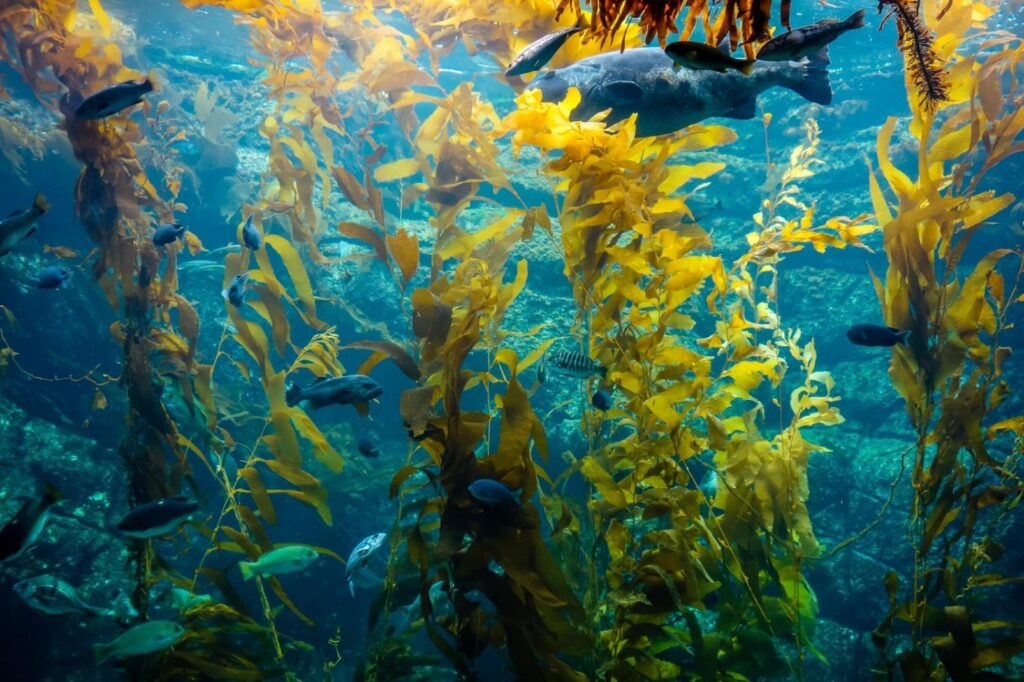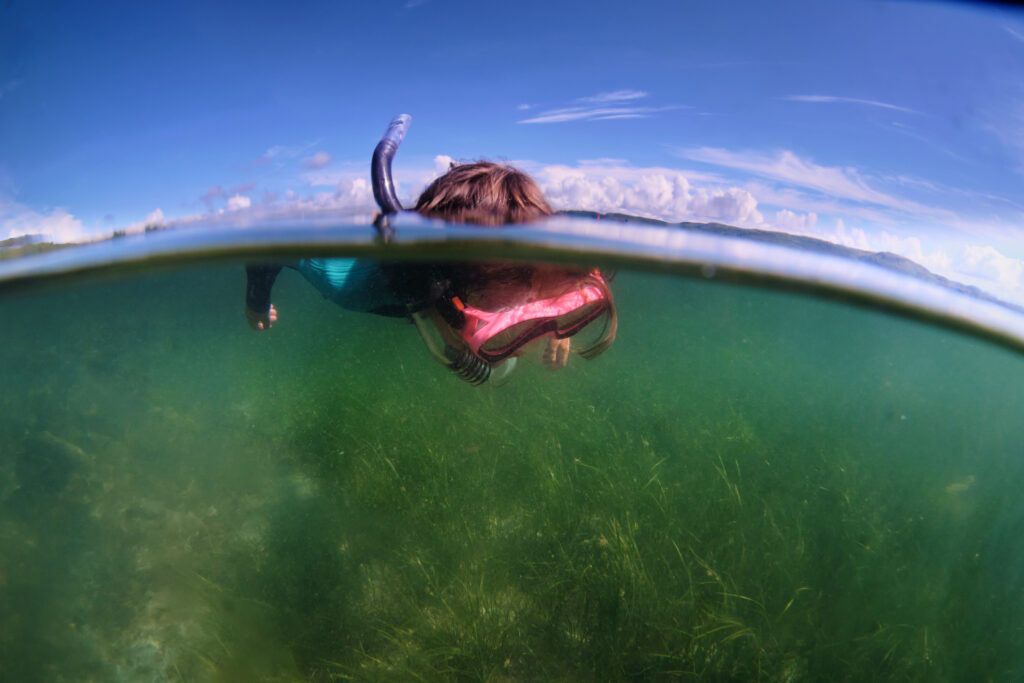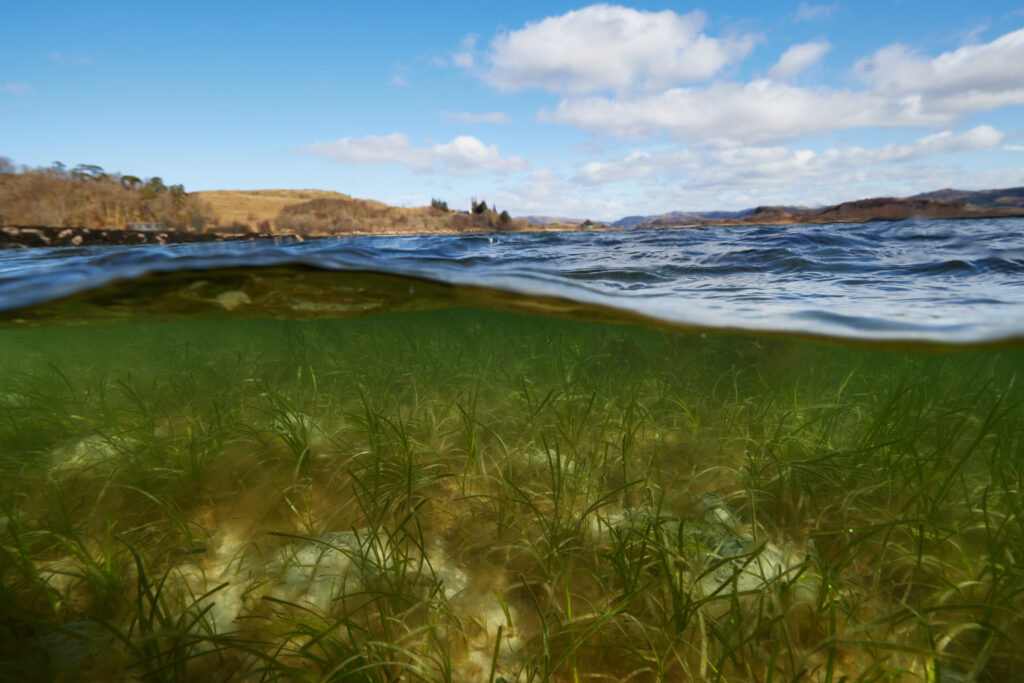Seaweed: The Carbon Miracle Cure?
Carbon offsetting schemes have been around for decades, but are too often surrounded by controversy and profiteering, with doubts as to their intentions and effectiveness. Here, True Travel founded Henry Morley explains how regenerating ‘seaweed forests’ can tackle the climate crisis and reveal plans for the True Travel’s own Forest.
Before I tell you about my obsession with seaweed, I will admit that six months ago I did not care for the stuff and I was blissfully ignorant that this slimy sea plant had the power to reverse our climate crisis.
I will also admit that at times I have found it frustratingly complex to really understand the climate crisis in detail because of so much conflicting commentary, and how we go about fixing it. So, over the past year, and in an effort to address this, I was introduced to Tim Flannery, a scientist at the University of Melbourne, who is a master of simplifying these complicated issues and presenting solutions.
Tim explains that there are two elements to fighting the climate crisis: reducing carbon emissions and achieving carbon drawdown. We hear a lot about the former, but in the years to come, we will also hear more about the latter, and the reason for that is very simple – offsetting our carbon emissions simply does not go far enough to undo the damage we have already caused. Planting a tree or two does not achieve either a reduction in carbon emissions, nor does it contribute to the short term drawdown of existing carbon in the atmosphere. This is the inherent issue with many carbon offsetting schemes – travellers pay a nominal fee to unregulated companies to ‘offset’ their carbon, perhaps without realising that sadly, the only thing they’re really completing is a tick-box exercise to feel they are being ‘sustainable’.
I strongly believe that it is up to those of us in the travel industry to lead from the front, and help navigate our clients through their planning, so they are confident they are making a tangible, positive impact. Many of the partners we work with are doing a great job to operate sustainably – African camps for instance are the pioneers of ‘leave no trace’ safari – but more can, and must, be done, especially when it comes to larger city hotels.



True Travel has always wanted to find a solution not just to help our clients offset their carbon footprint from their travels, but to go further and ensure they can have a carbon negative and climate positive impact. We started by looking at trees. Trees are, of course, a wonderful carbon capture asset. However, it is 25 years before they reach their full carbon capture potential. And the reality is that we simply do not have the time or space on Earth for the vast reforestation process that would be required to draw down gigatons of CO2 each year. We wanted to back something which made a big impact in a short space of time. And then we came across the magic of seaweed.
A seaweed frond (leaf) will begin absorbing carbon as soon as it starts to grow. It grows up to one metre per day and is usually fully grown within 12 months, living for 5 to 8 years. Every inch of the plant is photosynthetic, so it is constantly absorbing carbon. Wild seaweed production is free – it simply requires sunlight and the sea. It needs no fresh water, no weeding, no soil, no fertilizer and no land space to grow. In addition, seaweed produces the perfect environment to grow marine protein (such as fish and shellfish), as by absorbing nutrients it deacidifies the water, and creates its own ecosystem or reef for all ocean species to thrive on.
The numbers are astonishing: oceans cover 70% of the planet, and if we covered just 1% of the world’s oceans in seaweed forests, it would draw down 5.5 gigatons of CO2 per year, nearly double what is required by scientific forecasts to start the climate reversal.
How exactly does it work? When the seaweed absorbs carbon from the ocean, it stores it in its fronds. To remove the carbon from the cycle altogether, you can cut the seaweed and allow it to float into the deep ocean or you allow it to lead a natural life cycle. We can also harvest the seaweed, but in order to ensure the carbon is not being reintroduced back into the cycle, it’s usage must be chosen wisely. Bioplastics and biofuels are good examples of carbon positive harvesting.
For me, seaweed is a tangible way forward and I am thrilled to announce that True Travel is creating our own Seaweed Forest. This will be established in UK waters where seaweed stocks have been damaged by adverse fishing practices such as scallop dredging. Our clients and community are able to donate towards this cause and we will be pledging a percentage of our profits each year to its growth. Our aim is simple. To raise as much as we can, so we can continually expand the Forest.
At time of writing, we are in the midst of licensing our first hectare site. It will be positioned at around 10m in depth, using carbon neutral weights and infrastructure. The seaweed spores will be sown into biodegradable ropes or mats, depending on our specific license. As we raise more funds, we will install more lines until the hectare is filled to its maximum potential. At which point, the Forest will be left to live its natural life. After 12 months the fronds will be fully grown, and after 18, each plant will begin to reproduce. Conservatively we can estimate that this one hectare forest will naturally seed ten hectares. Within 18 months, those ten hectares will seed a further 100 hectares.
Funds raised will not just offset the carbon our clients’ holidays produce, but by allowing our seaweed forests to multiply, our aim is to make True Travel a carbon negative and climate positive business.’
About the Author
As the Founder and CEO, Henry launched True Travel after driving from the north to the south of Africa, working on conservation projects along the way. It became clear that the luxury travel industry needed a fresh approach.






